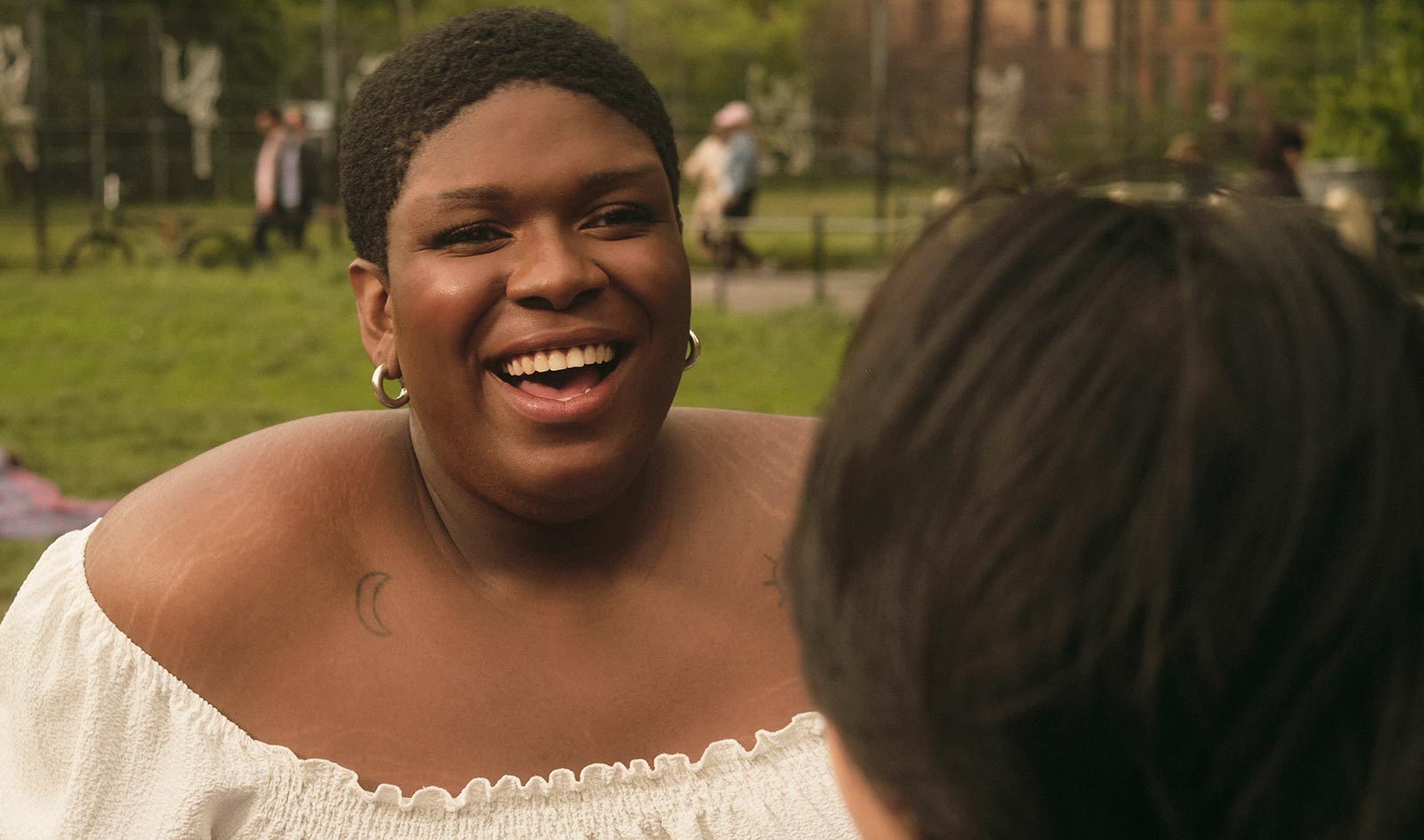How Do I Know If I'm Trans?

"What does it mean to be trans?"
Transgender people have a sense that the sex they were assigned when they were born does not match their gender identity: the gender that they feel inside.
Trans is an umbrella term that includes a broad spectrum of many different gender identities.
There is no one definition of what it means to be trans. Gender is not binary, and our experiences of gender are all subjective and personal. That means knowing if we're trans or not is something only we can answer for ourselves, which can be really tricky and confusing and challenging. If you're questioning things, you're not alone.
"Am I normal?"
Being trans is normal, and nothing new. A 2022 survey found that "5% of young adults in the U.S. say their gender is different from their sex assigned at birth." For as long as mankind has been around, there have been people who experienced trans or gender-expansive identities across all cultures and regions. Trans and non-binary people have always been here.
Try asking yourself:
- How do I feel when someone uses gendered pronouns or terms to refer to me, like “sir” or “ma’am”?
- How do I feel when I wear gendered clothing, like suits or dresses?
- How do I feel about physical characteristics of my assigned sex, such as facial hair or breast tissue?
- Do I feel like my gender assigned at birth just doesn’t fit me?
- What gender do I wish others saw me as?
- When I imagine myself in the future, what do I see?
It’s okay if you don’t have clear answers for these questions yet. The process of discovering our gender takes time, and our identities can shift and evolve over time, too.
"Do I need gender dysphoria?"
You may have heard the term gender dysphoria, or "a sense that your gender identity conflicts with the sex you were assigned at birth." It is a term that focuses on the emotional distress that a mismatch between one's assigned sex and gender identity causes.
Many trans and non-binary people experience dysphoria. The level of distress you feel can vary from just a little to severe, and it may show up across many areas of daily life. It can also come and go at different points of your life.
With so much media and news focused on trans hardship, you might think you need to feel suffering in order to be trans, but that is untrue. Not all trans people experience gender dysphoria.
On the other hand, you might experience what trans writer Adrian Silbernagel explains is gender euphoria, or the “feeling of satisfaction, joy, or intoxication, with the congruence, or rightness, between one’s internal and external reality (sex and gender, internal experience and outside expression, etc.).” Many trans folks across the spectrum feel joy when wearing clothing or accessories that align with their sense of self, or when people in their life perceive them authentically.
"What if I don't present very masculine/very feminine now, and don't want to in the future?"
There are no qualifications or checklists to being trans or non-binary. You can wear a pink dress and identify as a trans man. You don't need to wear makeup to be a trans woman.
In his article on first realizing he identified as a trans man, writer Kasey Leblanc shares that he spent much of his adolescence and early adulthood dressing in conventionally "feminine" clothing: "The clothes you’ve worn in the past and the clothes you’ll wear in the future do not dictate your gender, nor do they determine your 'transness.' So if you’re comfortable in jeans and a hoodie, or if you want to rock some nail polish, remember this: Clothes don’t make the person. You do."
"What if I didn't feel this way as a child?"
While many trans people have a sense of their gender identity at a young age, people of all ages can discover and identify themselves as trans. You are still valid regardless of what age you know or if/when you decide to come out.
Writer Samantha Riedel, who shares her the questions she first asked herself when identifying as non-binary transfeminine, explains that as a child, she repressed expressions of her femininity to avoid possible consequences from family: "I even joined Boy Scouts, one of the most stereotypically masculine youth clubs on the planet. That doesn't mean I'm not trans; it just means I subconsciously understood, even as a five-year-old, that being myself was to invite hostility and ridicule. Whether you knew who you wanted to be or not, and regardless if anyone saw any clues, your childhood doesn't have to determine who you are as an adult."
"Do I need to transition?"
Remember that there are many parts to gender, such as:
- Gender expression. This includes how you dress, how you use your voice and language, and your behavior.
- Gender presentation: This is how the world sees and understands you.
- Gender identity: This is how you see yourself.
Transitioning is a process of changing how you show up as your authentic self. Many trans people choose to transition in some way, so that their gender expression and presentation align with their identity. Transition can look like:
- Social changes. This includes coming out as trans, using a new name or pronouns, changing how you dress or style your hair. Some trans masculine and non-binary folks wear chest binders; some trans feminine and non-binary folks wear gaffs and shapewear.
- Legal changes. This includes updating documents like your driver's license/photo ID, passport, or birth certificate.
- Medical interventions. This includes taking puberty blockers or gender-affirming hormone replacement therapy, getting permanent hair removal services, or receiving gender-affirming surgery.
Not all trans people transition. For those that do, not all trans people transition in the same way. Legal and medical transitioning can be expensive, unsafe, or impossible to obtain depending on where you live. Your transition might be gradual, or happen very quickly. You might want some medical interventions (like hormones) but not all (like surgery.) You might present your gender authentically in some settings (like around friends) but not everywhere (like at work or school.)
No matter what your journey looks like, if you discover and identify yourself as trans, you are "trans enough" just as you are.
Ways to explore your gender identity
- Keep a journal and write about how you feel.
- Talk with trusted friends or family members.
- Talk with a competent, affirming counselor, or therapist. By this we mean someone who has worked with trans clients in the past and is knowledgeable about our community. A local LGBTQ+ center or school's GSA facilitator may be able to offer recommendations. (CenterLink's LGBTQ+ Directory is a great tool to find nearby centers. For online therapy, you might want to learn more about TalkSpace's licensed LGBTQ+ affirming therapists, many of whom are queer people themselves.)
- Talk with folks in the community. You can get to know others who may have gone through what you're going through now in a welcoming environment, whether that's in-person at a support group or online in a forum or other safe space.
- Read books or articles about trans people's experiences, or watch vlogs or video diaries online. There's no one right way to be trans: everyone's journey looks different. By hearing many stories, you can better understand your own sense of self and journey.
- If you wish, you can experiment with going by a different name or pronouns. This can be privately in your journal, online in forums/on social media, or in person with trusted people in your life, depending on your safety and comfort.
Your gender is not the only thing that defines you, and only you can define what your gender is. In the end, your trans status is just one part of who you are—a beautiful, complex, unique individual.
You may also want to read our guide,"How Do I Know If I'm Non-Binary?" which answers several FAQs and introduces a number of common non-binary identities.
The information on this page is for general education only. It is not medical advice, legal advice, or professional advice. For questions or help with your specific situation, please talk to a licensed doctor, lawyer, or another qualified expert.

Written by Point of Pride
Point of Pride provides financial aid and direct support to trans folks in need of health and wellness care.


